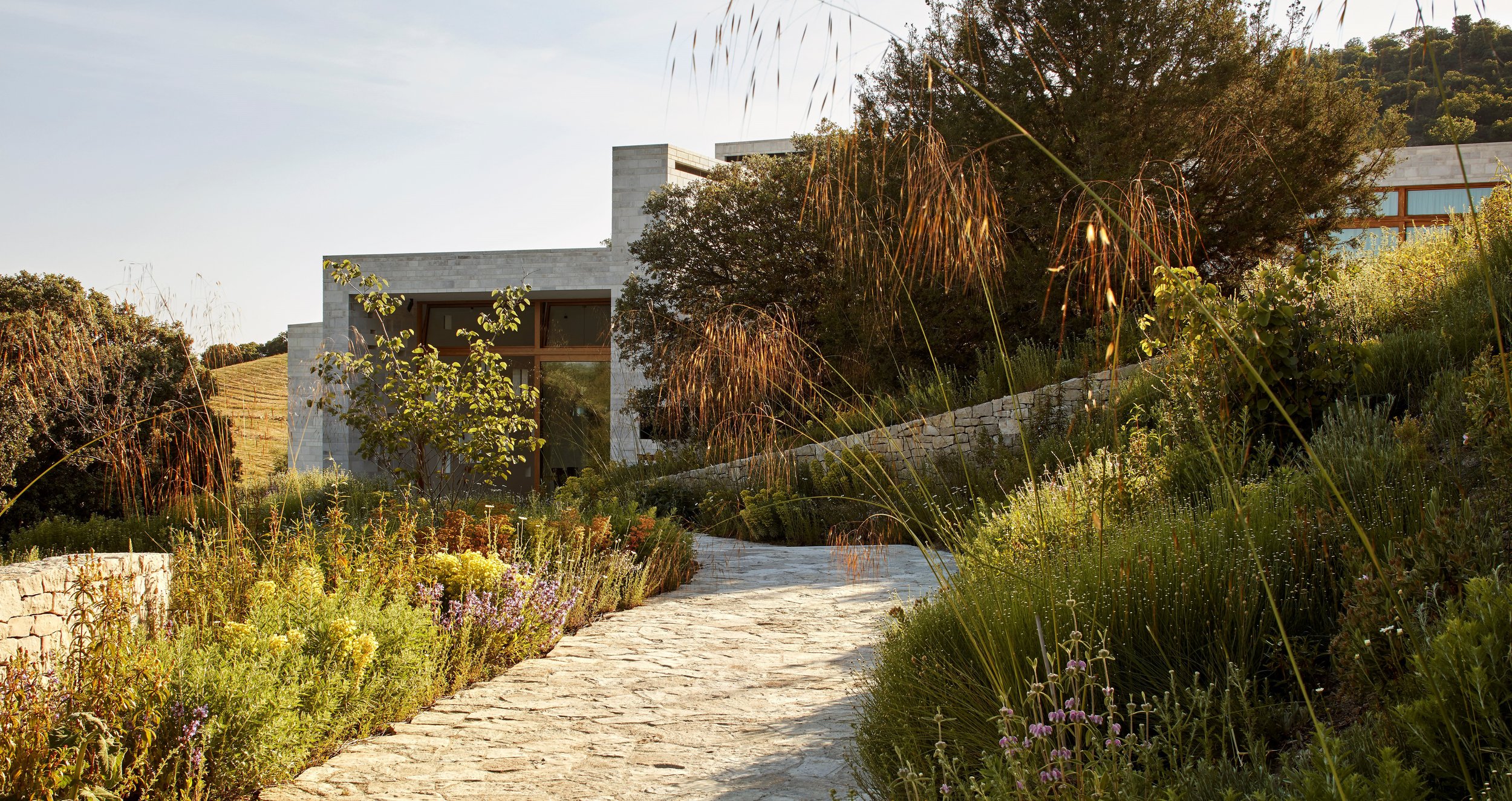On Tuesday evening at the Garden Museum Tom Stuart-Smith and his client Peter Sisseck spoke about a ‘garden’ they have been creating together.
They call it a garden, but perhaps it would be more realistic to call it a complete self-sustaining landscape that they've conjured up together. It’s the setting for Sisseck’s magnificent new home and vineyard in the Ribera del Duero region of Spain.
Given the involvement of Stuart-Smith, not surprisingly the approach is anchored in the thinking of Professor James Hitchmough. Roughly surmised as: Be mean, keep it lean, keep ‘em stressed, don’t feed the soil or the thugs will out.
And given the arid limestone landscape, the pair have turned for advice and plant sourcing to Olivier Filippi the legendary nurseryman based in Montpellier. His life’s project has been to re-establish Mediterranean plants in their natural rough-and-tumble setting with no irrigation.
Photo credit: Hufton + Crow
The result so far in Sisseck’s Ribera del Duero estate is the creation of “…a landscape that never happened, but could have happened”. Intentionally, I don’t call it an end-result. It’s more about treating a manmade landscape as a process, iterative and constantly evolving, with surprises and failures from time to time.
Incidentally, with the stark angular house designed by Danish firm Henning Larsen Architects they have managed to to avoid a Richard Meier-style white cube abruption in the landscape. Instead the new landscape embraces the house, almost enveloping it.
Photo credit: Hufton + Crow
Post-planting, man’s only intervention on this site is cutting down the perennials in Winter to simulate the behaviour of native wild goats. It’s similar in principle to the use of Belted Galloway grazing cattle to sustain the rare lowland heath ecology around Haslemere and Lynchmere, where Surrey meets West Sussex.
In addition to small perennial plug planting, shrubs like Euphorbia, Cercis, Ficus have been selected to draw visual and massing connections with the surrounding shrubland of Holm Oak and Juniper.
This light-touch approach to gardens within the landscape is very much of the moment. A recent New York Times feature ‘A Landscape At Peace With Man And Nature’ describes a no-garden garden that has been created by landscape designer John Beitel around a house on Hamptons Bay north of New York City.
Photo credit: Eric Striffler, New York Times
Set on the Long Island shoreline, the place could not be more different from central Spain. But the no-garden garden design principles are the same. Here they have used native shrubs and hardy perennials that draw little attention to themselves individually. According to Beitel: “Landscapes like this are in high demand these days among homeowners who want to live in serene surroundings without having to actually garden.” Fair enough I say.
Photo credit: Eric Striffler, New York Times
In sum, the (visible) hand of man in landscape design is not always desirable. In another field of design, German industrial designer Dieter Rams says ‘Good design is as little design as possible.’
All this has set me thinking about the industrial design concept of ‘invisible design’ and its relevance to the making of gardens and landscapes. But that’s quite enough for now. Keep an eye out for a follow-up next week.
Plant setting-out photo credit: Pépinière Filippi
Some useful links:
New York Times feature ‘A Landscape At Peace With Man And Nature’: https://www.nytimes.com/2017/09/30/arts/landscaping-garden-homes.html
Henning Larsen Architects: https://henninglarsen.com/
Pépinière Filippi: http://www.jardin-sec.com/






